| On May day, my friend Fred and I went on a trip to see some spots of Christian prayer and culture. We began in the town of Clinton, Massachusetts, at the Russian Icon Museum. |
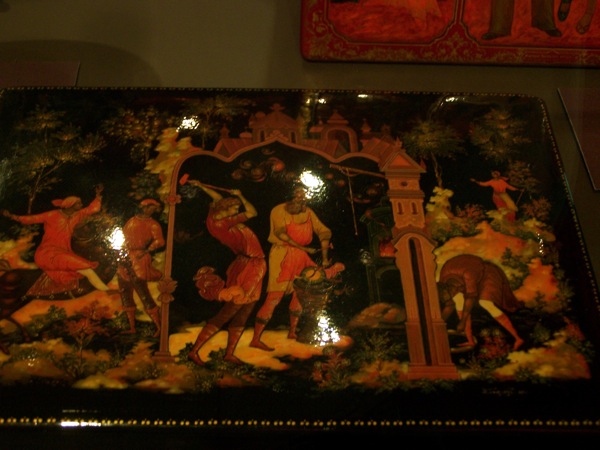 |
| The museum was hosting two special exhibits from Russia, a collection of palekh artifacts and 16 icons from one of the Russian museums. Palekh style painting was derived from icon writing, and was the only way most painters could survive during the Communist era in Russia, by painting folklore tales and patriotic motifs. But it kept the art form alive, ready for the day when Communism was ended. |
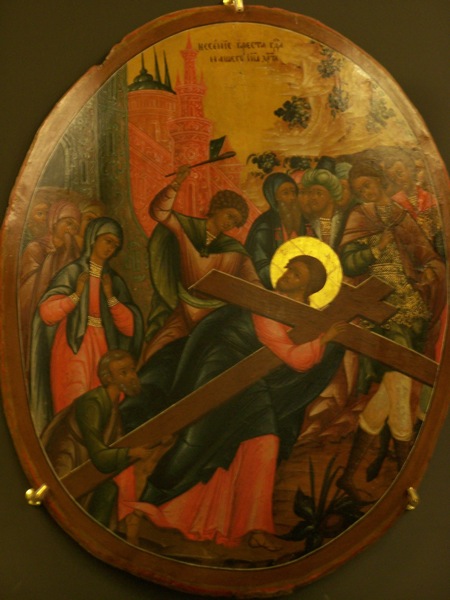 |
| The way of the cross painted in Palekh style |
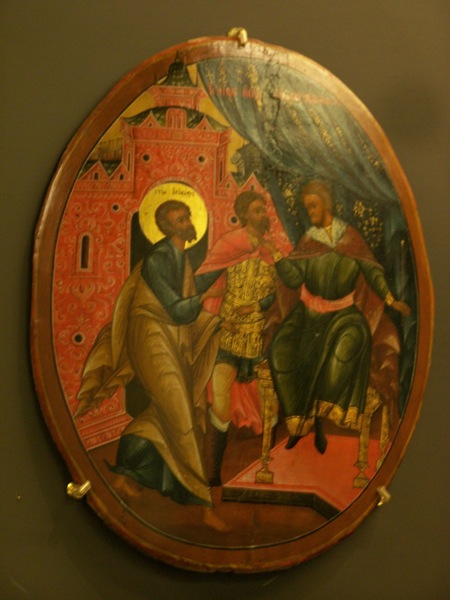 |
| Another icon in the Palekh style. |
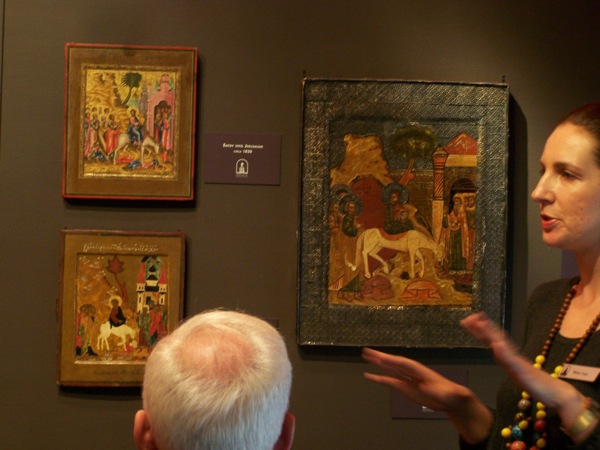 |
| The docent who led the tour began with three icons depicting Christ's Triumphal entry into Jerusalem. While the basic image is the same across the centuries (Russian icon writers must follow a pattern book, which the docent compared to a color-by-number book, to get the scene right) the realism increases somewhat as we reach contemporary ages. The docent pointed out how the tree began to look more like a palm tree as Russian knowledge of other lands increased. |
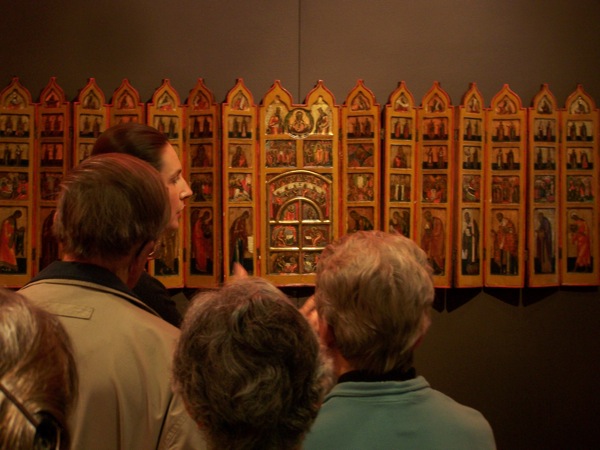 |
| The docent also explained the typical pattern of the iconostasis. There were a number of "travelling" iconostasis in the museum, which, much like stained glass in Western churches, was a visible catechism for the poor and illiterate. |
 |
| A close-up of the iconostasis above. |
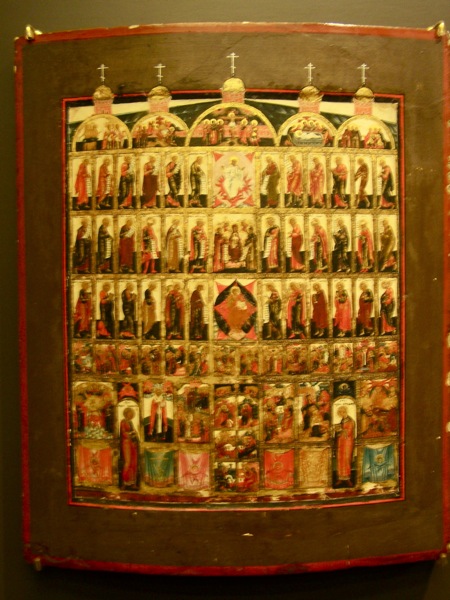 |
| Another iconostasis |
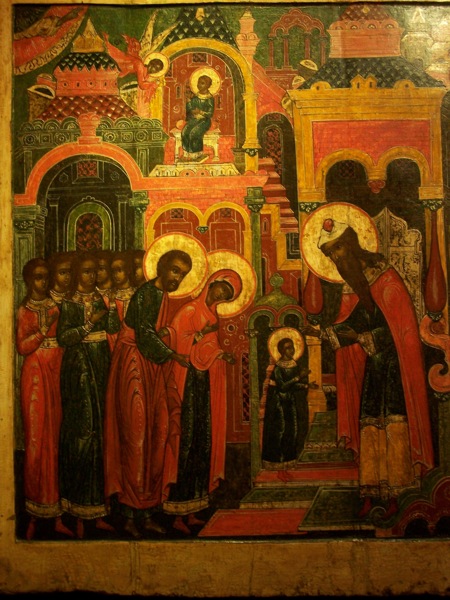 |
| An icon of the Presentation of Mary, from a story in the apocraphyl Gospel according to James. Mary was supposed to have been consecrated to God's service in the Temple. |
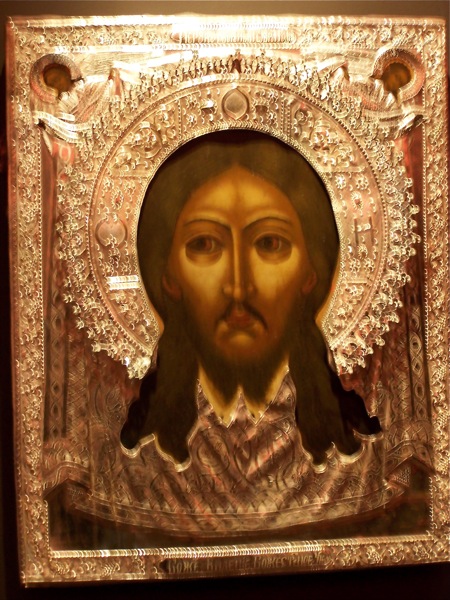 |
| An icon of the Face made without Hands, the original of which was reputedly made by Christ on a cloth which was sent to the Syrian King in order to cure him of an ailment. |
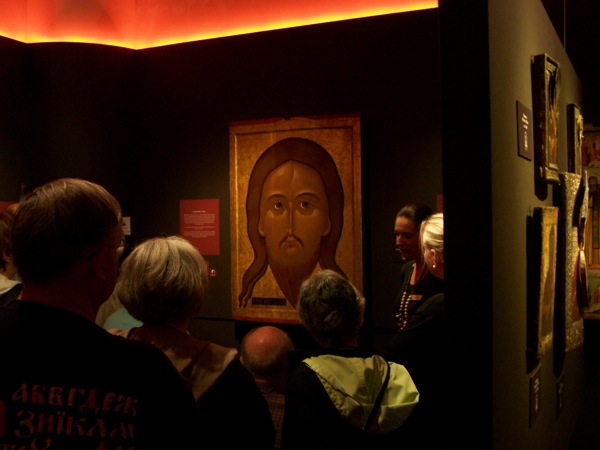 |
| A larger icon of the Face made without Hands. |
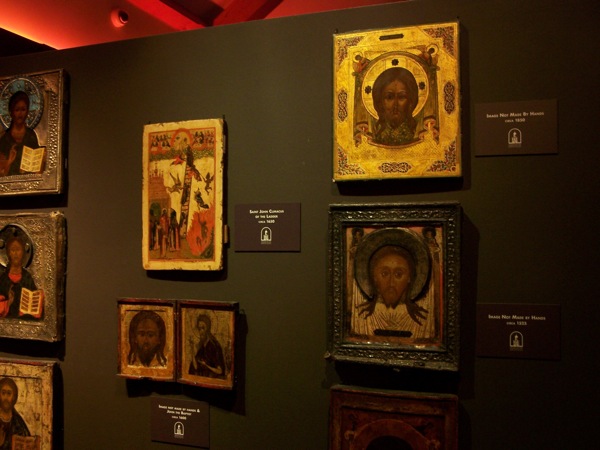 |
| And several more of the same icon. |
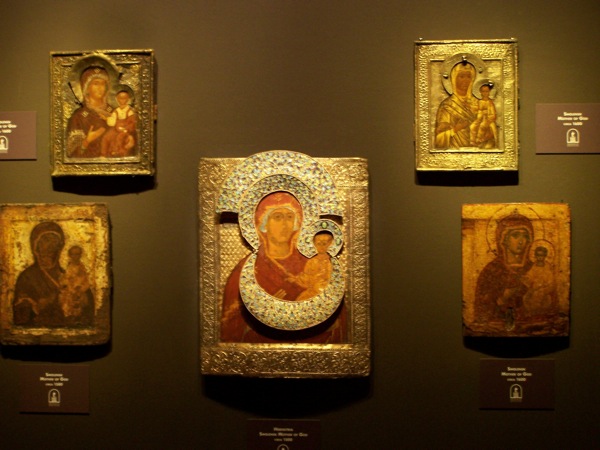 |
| Several icons of the Mother of God. |
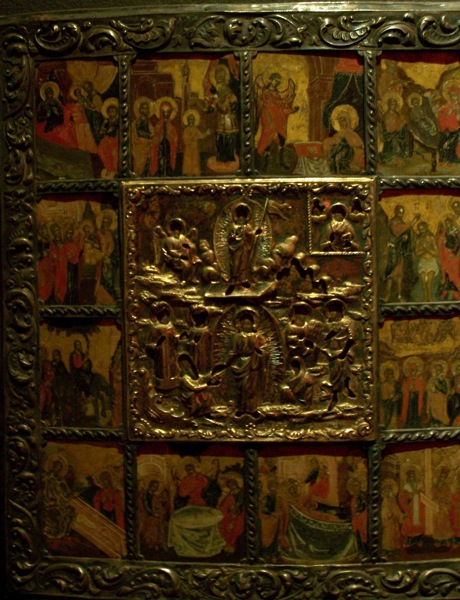 |
| The life of Christ in an icon. A common way of portraying the life of a saint is to have a larger central icon surrounded by twelve smaller panels which, beginning with the upper left panel, depict important scenes from the life of the person portrayed. |
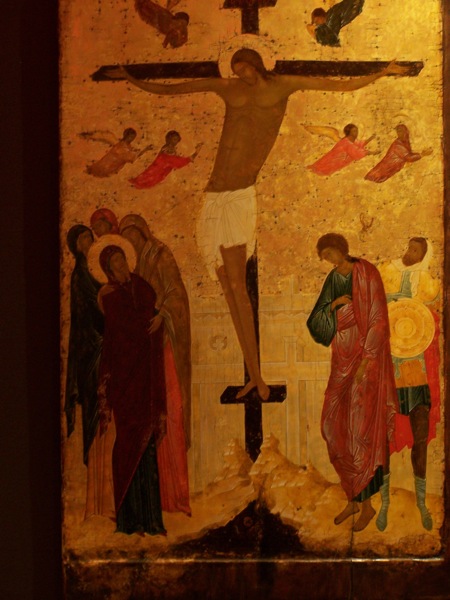 |
| An icon of the crucifixion, with the three Mary's comforting the Mother of God on the left, and St. John and the centurion Longinus on the right. |
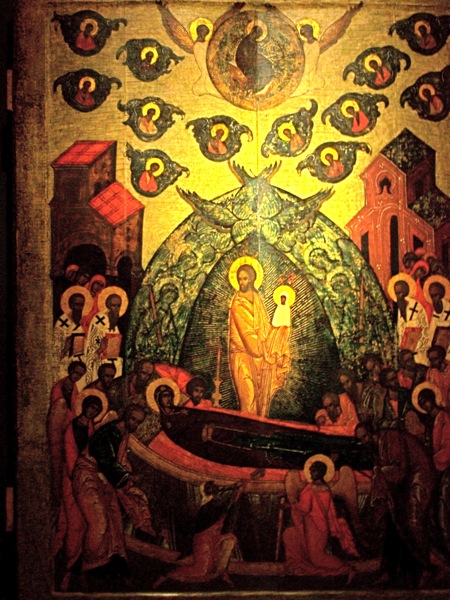 |
| The Dormition (Assumption) of the Mother of God. |
 |
| We grabbed some lunch after the museum visit, and then headed to the St. Benedict Center in Still River to pay a visit. Above is one of the two chapels at the Center. |
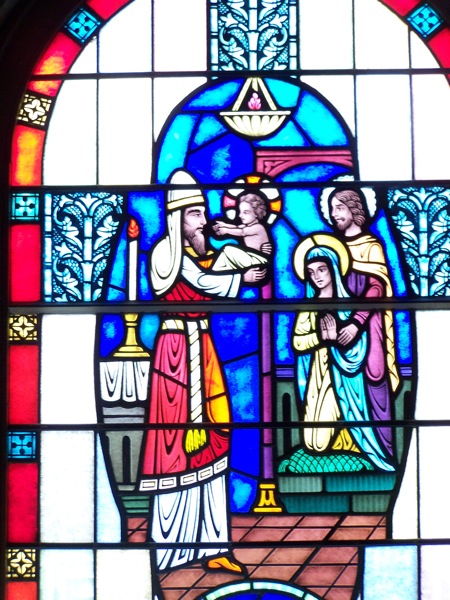 |
| The stained glass in the chapel portrays the mysteries of the rosary. On the Epistle side, are the Joyful mysteries. Pictured here is the Presentation of Jesus in the Temple. |
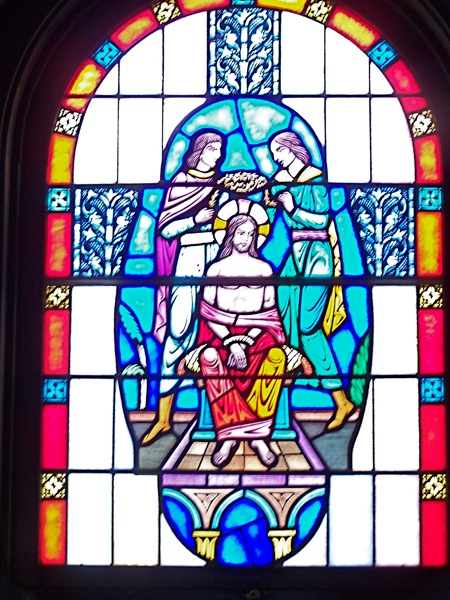 |
| On the Gospel side, the windows depict the Sorrowful mysteries. Above is the Crowning with Thorns. |
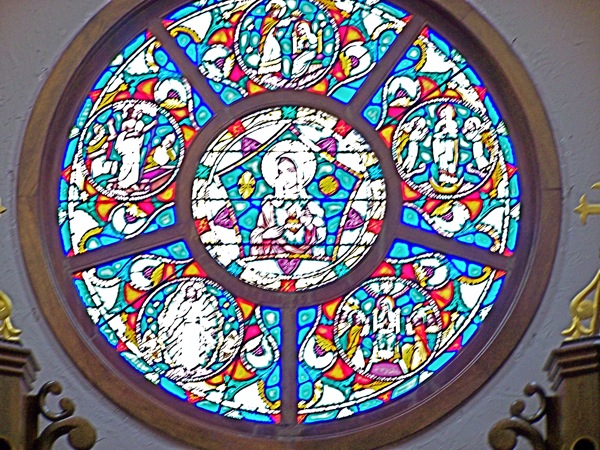 |
| Finally, the oculus window above the altar depicts the Glorious mysteries. |
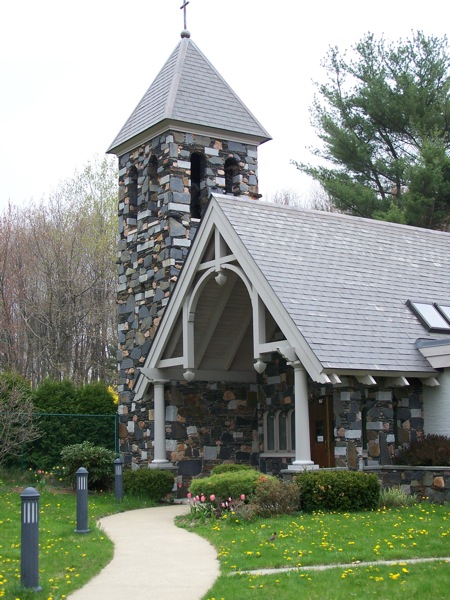 |
| On the last leg of the journey, we stopped in Wrentham to visit the Trappistines (Cistercian sisters). Their chapel from the outside. |
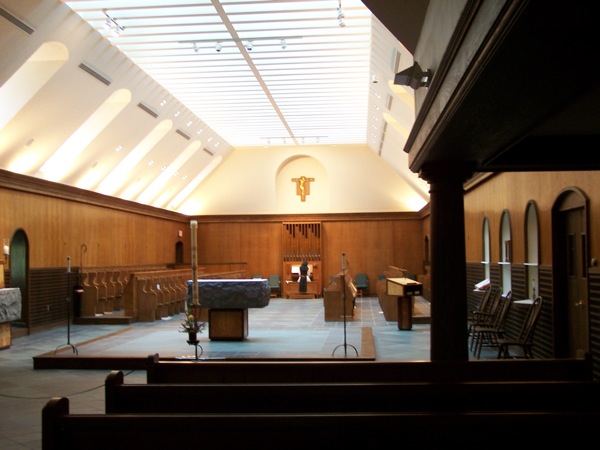 |
| And the inside of the chapel, with one of the sisters practicing the organ. |
















